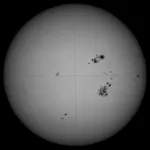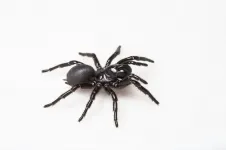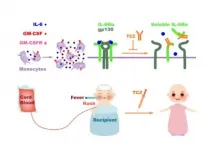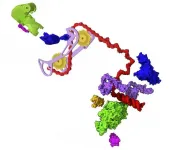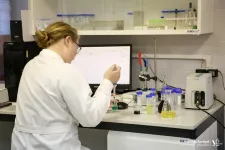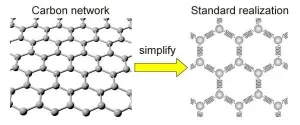Researcher's work with flies could be birth control boon
New testing technique could quickly find new ways to suppress ovulation with few side effects.
2021-07-19
(Press-News.org) When it comes to making eggs, female flies and female humans are surprisingly similar. And that could be a boon for women seeking better birth control methods, a UConn researcher reports in the July 5 issue of PNAS.
There are about 61 million women of reproductive age in the US, and about 43 million of them are sexually active but don't want a pregnancy right now, according to the Guttmacher Institute. And while there are a dozen or so different methods of birth control available, most have undesirable side effects for some of the women who try them. Despite the need, pharmaceutical companies are not investing in new birth control research. Private funders such as the Bill and Melinda Gates Foundation have stepped up to fill the gap, and their efforts are bearing fruit in the lab of UConn physiologist and geneticist Jianjun Sun, an associate professor in the Department of Physiology and Neurobiology.
Sun and his colleagues have shown that compounds that stop fruit flies from ovulation (the process of releasing a viable egg) also prevent mice from doing so. And if a drug stops ovulation in both flies and mice, it's likely to work in humans, too. And that could make it much easier to screen potential birth control drugs quickly and effectively.
Several years ago, Sun's lab figured out how fruit flies ovulate. In a fly, as in a mouse or a human, many potential eggs mature inside the ovary. But to be fertilized, the eggs need to break out of the little cocoons, called follicles, they've been developing inside. Not all the eggs do this successfully; in humans it's usually just one per cycle. Sun's lab figured out exactly how successful eggs break out. Then he had a thought: now that we know how they break out, might it be possible to stop them? Stopping the egg from breaking out of the follicle would be a brand new form of birth control.
He applied for the Gates Foundation's Grand Challenges Explorations Award for birth control research, and won $100,000 in 2016 for a proof of principle experiment: could fruit flies really be used to screen potential birth control drugs?
The answer, Sun found, is yes. He and collaborators at UConn Pharmacy, Northwestern University, University of Rutgers, and Michigan State University put fruit fly follicles in a dish and tested compounds from FDA's drug library. If the drug inhibited the fruit fly eggs from ovulating, they then tested it on mice follicles. Of the 1,170 drugs they tried, six worked in flies. When they tested four of those in mice, three of them worked! And two seemed to work without affecting hormone levels. And one of those two drugs, chlorpromazine, is classified as a presumed human reproductive toxicant by the Netherlands due to its potential damage to human fertility; all the work so far has involved animal models.
Chlorpromazine, usually used to treat schizophrenia, is not a good candidate for birth control because of its psychoactive effects. But it does prove the concept: fruit fly ovaries can be used effectively to screen compounds for non-hormonal birth control.
Sun went on to win $1 million from the Gates Foundation to broaden his work and test many more candidate compounds. He has also received grants from the Eunice Kennedy Shriver National Institute of Child Health and Human Development (NICHD). His lab is now partnering with Calibr at Scripps Research in San Diego to test 13,000 compounds in their library as potential non-hormonal birth control drugs.
INFORMATION:
ELSE PRESS RELEASES FROM THIS DATE:
2021-07-19
Using advanced remote sensing techniques can help the early detection of oak tree decline and control many other forest diseases worldwide, says new research from Swansea University.
The research published in Remote Sensing of Environment examined holm oak decline, which in its early stages causes changes to the tree's physiological condition that is not readily visible. It is only later, when the tree is more advanced in its decline, that outward changes to its leaf pigment and canopy structure become apparent.
The researchers used an integrated approach of hyperspectral and thermal imaging, a 3-D radiative transfer ...
2021-07-19
Philadelphia, July 19, 2021--Researchers at Children's Hospital of Philadelphia (CHOP) have developed a novel method for producing new antibiotics to combat resistant bacteria. Through an approach that would target bacteria with an antibiotic that is masked by a prodrug, which the bacteria would themselves remove, the researchers identified a method that would allow for development of new, effective antibiotics that could overcome issues of resistance. The findings were published today in eLife.
"We've created a sort of 'Trojan Horse' that would allow antibiotics to reach desired tissues undisturbed, ...
2021-07-19
(Edmonton, AB) Firefighters at the centre of the battle against the massive Fort McMurray wildfire in 2016 have persistent lung damage, according to new findings published by a University of Alberta occupational health research team.
"Those who were dealing with burning organic matter were exposed to a barrage of small particles in the smoke, and the ones with the highest exposure have long-term consequences," said principal investigator Nicola Cherry, an occupational epidemiologist, professor of medicine and Tripartite Chair of Occupational Health in the Faculty of Medicine & Dentistry.
The firefighters had more ...
2021-07-19
BIRMINGHAM, Ala. - An experimental drug reported in Nature Communications suggests that a "path is clearly achievable" to treat currently untreatable cases of cystic fibrosis disease caused by nonsense mutations. This includes about 11 percent of cystic fibrosis patients, as well as patients with other genetic diseases, including Duchenne muscular dystrophy, β-thalassemia and numerous types of cancers, that are also caused by nonsense mutations.
The drug is a small molecule with a novel mechanism of action, say David Bedwell, Ph.D., and Steven Rowe, M.D., MSPH, co-senior authors. Bedwell is professor and chair of the University of Alabama at Birmingham Department of Biochemistry and Molecular ...
2021-07-19
Scientists from the University of Graz, Kanzelhöhe Observatory, Skoltech, and the World Data Center SILSO at the Royal Observatory of Belgium, have presented the Catalogue of Hemispheric Sunspot Numbers. It will enable more accurate predictions of the solar cycle and space weather, which can affect human-made infrastructure both on Earth and in orbit. The study came out in the Astronomy & Astrophysics journal, and the catalogue is available from SILSO -- the World Data Center for the production, preservation, and dissemination of the international sunspot number.
Our Sun is a big boiling ball of gas, most of which is so hot that electrons are ripped off from atoms, creating a circulating mix of charged particles, called plasma. These moving charges ...
2021-07-19
A potentially life-saving treatment for heart attack victims has been discovered from a very unlikely source - the venom of one of the world's deadliest spiders.
A drug candidate developed from a molecule found in the venom of the Fraser Island (K'gari) funnel web spider can prevent damage caused by a heart attack and extend the life of donor hearts used for organ transplants.
The discovery was made by a team led by END ...
2021-07-19
The research team led by Prof. WEI Haiming and Prof. TIAN Zhigang from Division of Life Sciences and Medicine, University of Science and Technology of China (USTC) of the Chinese Academy of Sciences (CAS), collaborating with the research group led by Prof. SUN Zimin from the First Affiliated Hospital of USTC revealed the pathological mechanism of severe pre-engraftment syndrome (PES) after umbilical cord blood transplantation, not only providing a treatment strategy for patients with PES, but significantly guiding for further improvement in the curative effect of unrelated cord blood transplantation (UCBT). This study was published in Nature Communications.
UCBT is an important means to cure hematological ...
2021-07-19
In February 2020, a trio of bio-imaging experts were sitting amiably around a dinner table at a scientific conference in Washington, D.C., when the conversation shifted to what was then a worrying viral epidemic in China. Without foreseeing the global disaster to come, they wondered aloud how they might contribute.
Nearly a year and a half later, those three scientists and their many collaborators across three national laboratories have published a comprehensive study in Biophysical Journal that - alongside other recent, complementary studies of coronavirus proteins ...
2021-07-19
Russian scientists have synthesized chemical compounds that can stop the degeneration of neurons in Alzheimer's, Parkinson's, and other severe brain pathologies. These substances can provide a breakthrough in the treatment of neurodegenerative pathologies. New molecules of pyrrolyl- and indolylazine classes activate intracellular mechanisms to combat one of the main causes of "aged" brain diseases - an excess of so-called amyloid structures that accumulate in the human brain with age. The essence of the study was published in the European Journal of Medicinal Chemistry. Experts from the Institute of Cytology of the Russian Academy of Sciences, the Institute of Organic Synthesis of the Ural Branch of the Russian ...
2021-07-19
A new mathematical model helps predict the tiny changes in carbon-based materials that could yield interesting properties.
Scientists at Tohoku University and colleagues in Japan have developed a mathematical model that abstracts the key effects of changes to the geometries of carbon material and predicts its unique properties.
The details were published in the journal Carbon.
Scientists generally use mathematical models to predict the properties that might emerge when a material is changed in certain ways. Changing the geometry of three-dimensional (3D) graphene, which is made of networks of carbon atoms, by adding chemicals or introducing topological defects, can improve its catalytic properties, for example. But it has been difficult for scientists to understand why this happens exactly.
The ...
LAST 30 PRESS RELEASES:
[Press-News.org] Researcher's work with flies could be birth control boon
New testing technique could quickly find new ways to suppress ovulation with few side effects.




